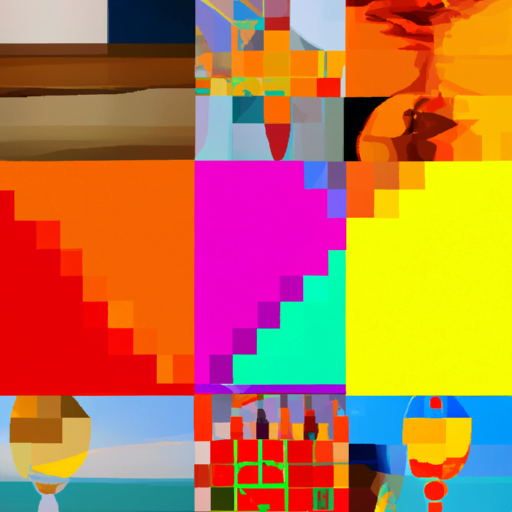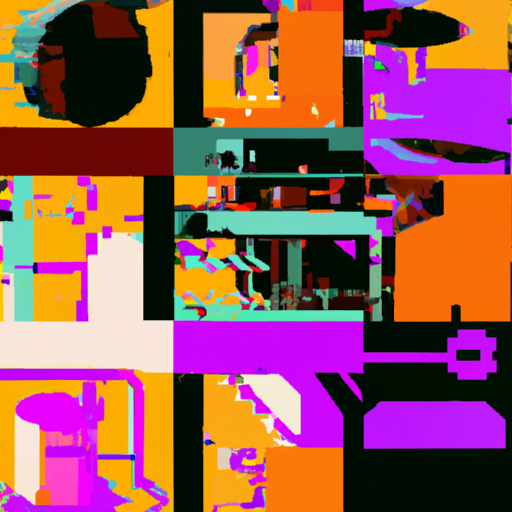
-
Table of Contents
Exploring AI-Generated Abstract Art in Design

Artificial Intelligence (AI) has revolutionized various industries, and the world of art and design is no exception. With the ability to analyze vast amounts of data and learn from patterns, AI has opened up new possibilities for artists and designers. One fascinating area where AI has made significant strides is in the creation of abstract art. In this article, we will explore the impact of AI-generated abstract art in design, its benefits, and the challenges it presents.
The Rise of AI in Art and Design
Artificial Intelligence has become increasingly prevalent in the art and design world, with artists and designers leveraging AI algorithms to create unique and innovative works. AI algorithms can analyze vast amounts of data, learn from patterns, and generate new ideas, making them valuable tools for artists seeking inspiration or looking to push the boundaries of their creativity.
Abstract art, in particular, has seen a surge in AI-generated creations. Abstract art is characterized by its non-representational nature, focusing on shapes, colors, and forms rather than depicting recognizable objects. This makes it an ideal genre for AI algorithms to explore, as they can generate unique and unconventional patterns that may not have been conceived by human artists.
The Benefits of AI-Generated Abstract Art
AI-generated abstract art offers several benefits to the art and design community:
- Inspiration and Exploration: AI algorithms can analyze vast amounts of existing abstract art and generate new patterns and ideas. This can serve as a valuable source of inspiration for artists, helping them explore new directions and expand their creative horizons.
- Efficiency and Speed: Creating abstract art can be a time-consuming process, requiring experimentation and iteration. AI algorithms can generate multiple variations of abstract art quickly, allowing artists to explore a wide range of possibilities in a shorter timeframe.
- Collaboration: AI algorithms can be used as collaborative tools, working alongside human artists to co-create artworks. This collaboration between human creativity and AI algorithms can lead to unique and unexpected results.
- Accessibility: AI-generated abstract art can make art more accessible to a wider audience. By leveraging AI algorithms, artists can create affordable prints or digital versions of their work, making it more accessible to art enthusiasts who may not have the means to purchase original artworks.
Case Studies: AI in Abstract Art
Several notable case studies demonstrate the impact of AI-generated abstract art:
1. The Next Rembrandt
In 2016, a team of data scientists and art historians collaborated to create “The Next Rembrandt.” Using AI algorithms, they analyzed Rembrandt’s existing works and created a new painting in his style. The AI algorithm analyzed Rembrandt’s use of color, brushstrokes, and composition to generate a new artwork that closely resembled the master’s style. This project showcased the potential of AI in recreating the works of renowned artists and expanding their artistic legacy.
2. DeepArt.io
DeepArt.io is an online platform that allows users to transform their photos into AI-generated abstract art. The platform uses AI algorithms to analyze the input image and generate a unique abstract interpretation. Users can experiment with different styles and parameters to create personalized abstract artworks. DeepArt.io demonstrates how AI can empower individuals to become artists and explore their creativity through abstract art.
Challenges and Ethical Considerations
While AI-generated abstract art offers exciting possibilities, it also raises several challenges and ethical considerations:
- Originality and Attribution: AI algorithms learn from existing artworks, which raises questions about the originality and attribution of AI-generated art. Who should be credited as the artist when AI algorithms are involved in the creative process? This issue requires careful consideration and potentially new frameworks for intellectual property rights.
- Human vs. Machine Creativity: The role of AI in the creative process raises philosophical questions about the nature of creativity. Can AI algorithms truly be considered creative, or are they simply mimicking patterns learned from existing artworks? This debate challenges our understanding of art and the human experience.
- Unconscious Bias: AI algorithms learn from data, which can introduce unconscious biases into the creative process. If the training data is biased towards certain styles or artists, the AI-generated art may perpetuate those biases. It is crucial to ensure that AI algorithms are trained on diverse and inclusive datasets to avoid reinforcing existing biases.
Summary
AI-generated abstract art has emerged as a fascinating and innovative area in the field of design. It offers numerous benefits, including inspiration, efficiency, collaboration, and accessibility. Case studies such as “The Next Rembrandt” and platforms like DeepArt.io demonstrate the potential of AI in abstract art creation. However, challenges related to originality, attribution, human vs. machine creativity, and unconscious bias must be addressed to fully harness the potential of AI in the art and design world.
As AI continues to advance, it will undoubtedly play an increasingly significant role in shaping the future of abstract art and design. By embracing AI as a tool for inspiration and collaboration, artists and designers can push the boundaries of their creativity and create truly unique and thought-provoking works of art.
